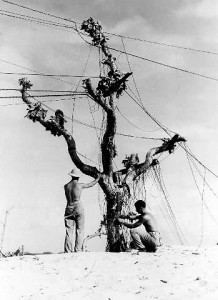AM; it has a future or not? I cannot make up my mind sometimes. As some AM stations can and do make a profit, many others do not. Truth be told, the engineering effort that goes into an AM directional antenna is becoming a black science. And some people may say, “oh, but that gives you job security,” but that is not usually how it works. Instead of paying somebody more money (or any money) to maintain something, the business philosophy these days seems to be to chuck the baby out with the bath water. Because after all, if not AM then FM right? Yes, of course! Except, the very thing that happened to AM is happening to FM too. Increasing noise floors, jamming signals into every possible nook of the frequency spectrum, no thought toward technical facilities and infrastructure, and horrible, horrible programming will result has resulted in the decline of listening for FM too. Mark my words and the date; FM broadcasting will suffer the same fate as AM if current trends continue.

How will it end? I would hazard with more of a whimper than a bang. I imagine something like this:
One day, in the not very distant future, at an AM station somewhere, the transmitter faults and goes off the air. Chip, the computer guy, goes in the back room, moves a bunch of cleaning supplies, cases toilet paper, a garbage can and the remote gear out of the way so he can reach the ON button on that box the old guy told him about. The big box makes some clunking noises and comes on for a second, but then the fault light called “VSWR” or something comes on and the transmitter shut off again.
Chip, the computer guy, remembering what the old guy said about that big tall thing behind the building, pushes the back door open. What used to be a field is now completely overgrown with weeds, brush, and trees. He follows the pipe from the back of the building, through the prickers until he comes to an old fence, which is falling down. He pushes on the locked gate and it falls off the hinges. Inside the fence, there is a rusty tower and a white box. Finding the box unlocked, he opens it and sees a baffling array of metal coils, copper tubes, and black round things. He sees that one of the black round things is cracked in half and black goop is coming out of it. The computer guy takes a picture with his cellphone and emails it to the market manager/vice president of sales.
A few minutes later, the the market manager calls back and Chip tries to explain what is going on, stating the the transmitter went off and the black thing in the box by the tower looks broken. The market manager/vice president of sales asks “Has anyone called and complained?” Chip says no, not that he is aware of. The market manager says, “Eh, fuck it leave it off.”
The end.


